2020 was the year 1.5 Million users enrolled in full-time online degrees.
Out of these, Forbes calculated that over 1.2 million students took part-time classes.
Most of these students aced their finals and attended lectures from their beds. However exciting it was initially, the social isolation slowly crept in, making most students express their frustration.
That’s what this article will discuss the advantages and disadvantages of online learning backed by research and studies.
With that, let’s dive into the statistics and available case studies below!
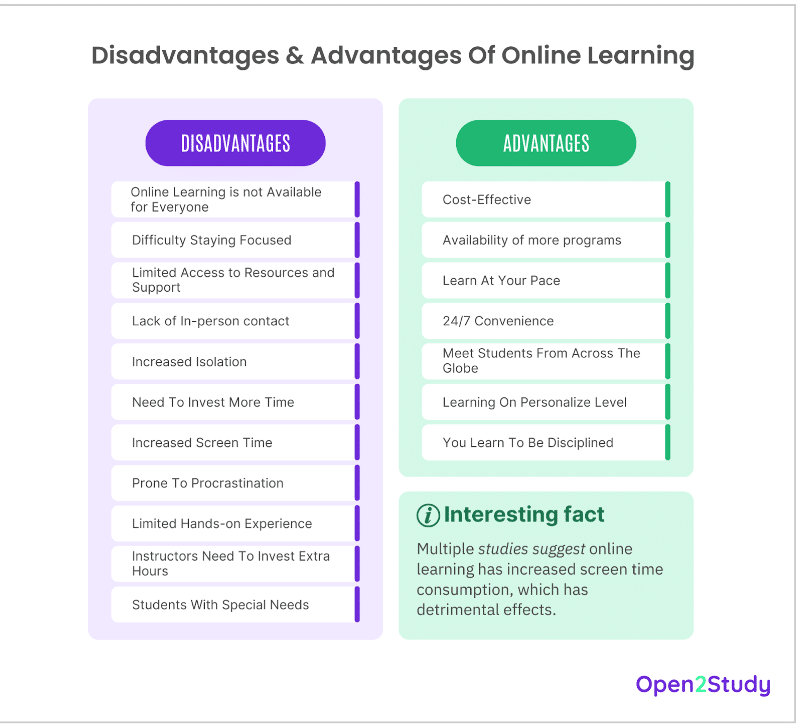
7 Advantages Of Online Learning (Latest Data)
Now that we have discussed the downsides of online learning, let’s look at some positives. In the section below, I have added seven benefits of online learning along with relevant statistics for you to refer to:-
1. Cost-Effective
While most tuition fees make you want to sell your body parts, some colleges provide an abundance of free resources. They only charged me for the exam fee and application form.
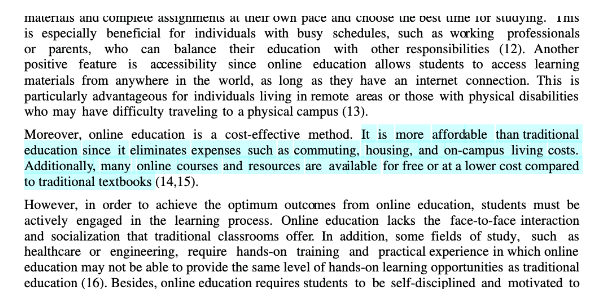
The rest of the service was completely free of cost. Most importantly, you can even learn from any foreign university without spending a penny on flights and accommodations.
Check out the data from the Education Data Initiative below:-
- Students who commute to college pay $1,360 per annum.
- The cost of an online degree is $54,183, whereas the price for the same degree is $85,348.
- Students pay $600 extra for campus meals.
- The private institution charges $60,593 for online students, whereas the same course for in-person students is $60,593.
2. Availability Of More Programs
When learning at a school, sometimes you cannot take a particular class because teachers are unavailable. This happened to me once when I wanted to take Sociology.
However, when you pursue an external school, abundant resources are available.
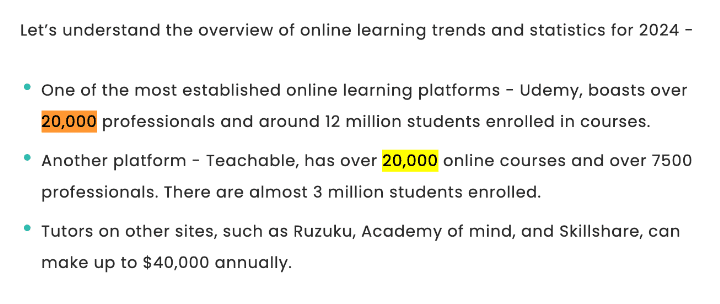
For example, online platforms like Udemy, Skillshare, and Teachable have boasted in sales due to their abundant courses and demand for professionals. For instance, Radix web of e-learning statistics found that Teachability has over 20K available courses.
In fact, that’s what enhanced most tutors’ salaries, which are up to $40K annually. The only downside of online learning is the need for help picking the reference materials. (If you are studying entirely on your own.)
I understand how complicated languages some materials use, but considering the technology these days, you can easily ask ChatGPT to break it down for you in simpler words.
3. Learn At Your Pace
My favorite part about online learning is not having anyone on your back to pace you up.
American Heart Association has stated that learning at your own pace increases the retention rate by 25% to 67%. Not only that, but it improves student performance by 25%.
So, now, you can decide on the topic or class you want to learn and adjust your time management. You don’t need to wake up at 7 to take that Psychology class. Instead, you can learn all night, considering the lectures are mostly recorded.
4. 24/7 Convenience
Unlike traditional learning, which has a 6-8 hours working period, when you learn from home, you are self-sufficient and learn anytime (or night).
Online Learning flexibility is the main reason why 63% of students do not need to depend on the school’s service that does revert past Friday. Instead, they get to ask your queries in the study groups, as most online learnings encourage collaboration.
Over 42% of older adults (30+) were more enthusiastic about enrolling in online education because they don’t need to learn their full-time jobs. It’s even more convenient to take courses outside your city or country.
5. Meet Students From Across The Globe
Continuing the above point, meeting people from different cultural backgrounds is rare when learning in a traditional setting. At most, you will meet people similar to your ethnicity.
However, when you learn online, you take up random courses all across the globe:-
- Digital Exchange Program: The free weekly video call program invites 6 to 12th-grade students and matches them with peers worldwide while engaging in random activities.
Here, you have a higher chance of meeting different people. Sometimes, you do not need to enroll in any foreign exchange program.
- Instead, you can meet people in 24/7 online study forums.
- There are also Discord channels where people can join just to study together.
6. Learning On Personalize Level
The increasing demand for online learning is due to its personalized nature. According to G2 e-learning Hub, 36% of students prefer online learning due to its personalized learning.
They also suggest a 25% to 60% retention rate through online learning. For example, some students are visual learners, while others prefer more audio or written material.
So, depending on your choice of learning, different websites tailor their teaching method to a student’s learning speed and sense of style. One of the best examples is the Busuu language app, which caters to visual and auditory learners.
7. You Learn To Be Disciplined
Learning discipline is another benefit of online learning that is also a drawback. Students have become so lenient in the last couple of years that focusing for more than 2 seconds is difficult.
For me especially, I had to learn not to change tabs whenever I was bored, received a text, or wanted to change the song. I developed more self-discipline once I started restricting myself from acting on my distractions. That improved my productivity even more.
High School of America has given some effective tips to develop self-discipline.
11 Disadvantages Of Online Learning As of 2024
Learning from home is a necessity once in a while, as it helps you relax and get your tasks done at a flexible pace. But do you think it’s beneficial in the long term?
Multiple studies suggest online learning has increased screen time consumption, which has detrimental effects.
So, let’s take a look at 11 hand-picked disadvantages of online learning as of 2024:-
1. Online Learning Is Not Available For Everyone
According to the ACT Research, the US population has shown that 25% of students come from low-income families. That, as a result, limits their access to reliable internet and technology.
In fact, due to constant power outages, frequent glitches restrict productivity, too. Don’t believe me? In 2022, the average US resident raised concerns about five and a half hours of electricity interruptions to EIA – the Electricity Information Administration.
This made it difficult for students to attend online classes (as there was no Internet) or deliver their assignments on time.
Let’s assume that you could use mobile data. However, bigger gadgets like laptops and desktops require more internet and would quickly exhaust your daily internet limit. Moreover, the lack of electricity directly affected the inability to use a computer.
For laptop users, their battery life was short, too. So, overall, having frequent power outages affected online learning.
2. Difficulty Staying Focused
Online learning means access to laptops and mobile devices. Considering the low attention span of this generation, they have a habit of switching tabs every two minutes.
This especially happens during online lectures and thus results in incomplete knowledge.
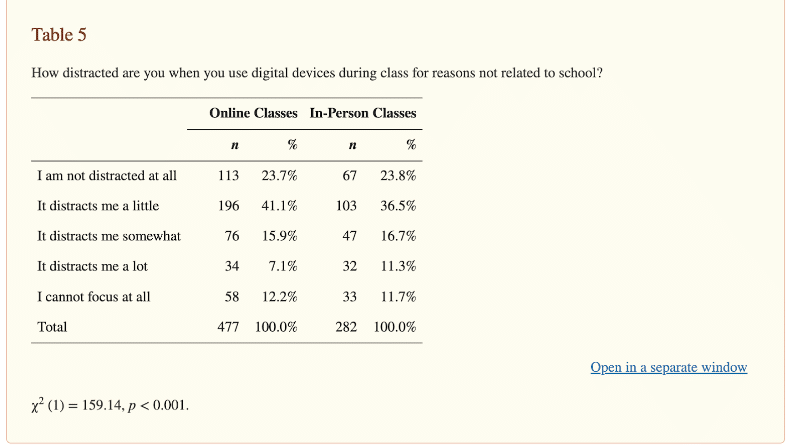
The National Medicine Library studied how distracted you are when you use devices while studying. 41.1% of students are a little distracted, whereas 12.2% cannot focus at all.
Either way, this affects students’ ability to understand the concepts they are learning fully. For example, you are in an online lecture. Now, since you are bored, you switch tabs and open Twitter! Occasionally, posting how you cannot wait to log out. In these moments of distraction, you miss out on the important information your professor shares.
Assuming that it’s a sure-shot question that would appear in the exam, you would lose grades since you were not aware. The moral: Distraction is dangerous for an online student.
3. Limited Access To Resources And Support
Multiple complaints have arisen from online students. When you are distance learning, receiving proper notes, understanding the exam and assignment schedule, and, worst of all, having no group chats with students is too difficult.
Overall, it makes online learning really hassling process. You do not have any other choice but to visit your academic center. As per the Cengage survey of 2020, over 81% of students are not getting enough support from their instructors.
Likewise, some academic leaders ended up being accountable – as the research held by Babson Group stated that only 29.1% of University professors were satisfied and believed they succeeded in providing necessary support to online learners.
4. Lack Of In-Person Contact
Sometime in March 2020, Barnes and Noble Education conducted a survey in which around 432 US college students participated:-
- 64% expressed not having a suitable study environment at home.
- 55% raised their concern over reduced social interactions.
- 45% of students shared that they could not perform well through online learning.
So, it’s evident that most students find studying around peers helpful as they learn better.
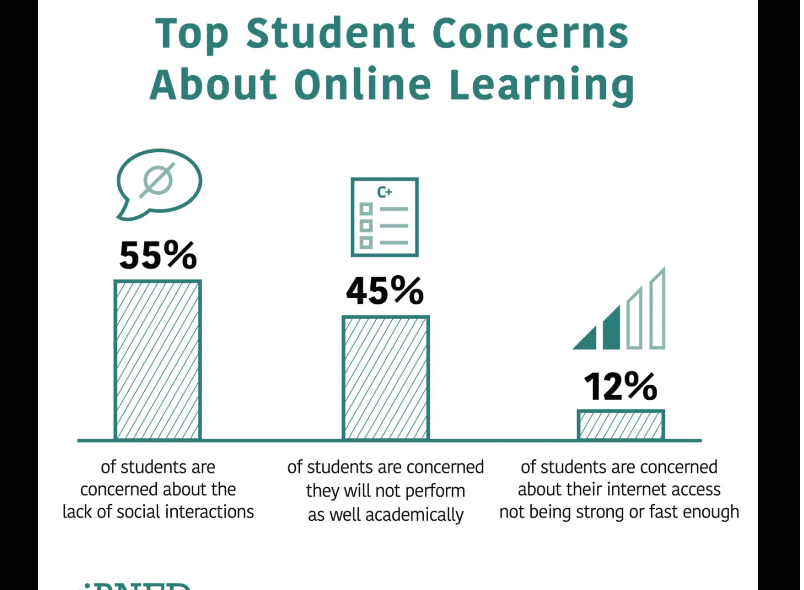
That’s because when you see your peers doing better and achieving good marks, you are fueled to study hard, too. Having healthy competition around you keeps you motivated to be better.
5. Increased Isolation
In-person learning is the only time most teenagers leave the house, as nobody wants lower attendance. This is more so because you either have to pay for a fine or complete extra assignments.
When there is no compulsion for in-person lectures, you need to remember how to socialize and, in a way, stay in your room 90% of the time. That indeed impairs your ability to build social connections and even self-confidence.
Research by the National Library of Medicine found that 35% of males and 64% of females who study online have higher levels of social isolation and loneliness than those who study on campus.
The survey was done between the age group of 25 to 30, where the students were mostly pursuing bachelor’s (72.53%) and master’s (27.47%). Check out the details below:-
- 25 year olds or below: 53%
- 26 to 30 year olds: 27.47%
- Over 30 year olds: 19.14%
6. Need To Invest More Time
Studying independently requires reviewing abundant reference material, which is more time-consuming than teachers giving you well-curated notes. As per the research conducted by Harvard University, the success rate of students depends on consistent mentor feedback.
And that is because you can immediately ask your mentor when you stumble upon a problem. Reaching out to a mentor in a traditional study setting is way more convenient than messaging them on an online forum.
In addition, the replies you get are late and incoherent. That further requires you to spend extra time reviewing the resources and resolving your own problem. Especially when you’re in an urgent situation.
7. Increased Screen Time
The increase in overused screen time has resulted in physical symptoms in students, such as backache and neck pain. Based on an analysis done in a study, Bioscience Biotechnology Research Communications revealed:-
- Using a laptop for more than two hours a day results in neck pain
- Whereas more than 5 hours of usage results in lower back pain
Another study reported that students spent 17.9 ±12 hours per week on screens.

The study also found that sitting in a position for studying, if the posture continues for a longer duration, may cause musculoskeletal-related problems.
8. Prone To Procrastination
As per the recent Statistics report by Gitnux Market Data, 86.3% of Graduates procrastinate while writing assignments. While one may think it’s harmless and everybody delays their tasks here and there, procrastination habit resulted in a 2.2% lower GPA in undergraduates.
The study also researched which gender was more prone to procrastination. It turns out that the male percentage is 10.5% higher than females:-
- Males’ level of procrastination: 76.6%
- Females’ level of procrastination: 66.1%
Lastly, procrastination also resulted in poor physical health in 25% of students who consistently delayed their academic tasks.
9. Limited Hands-On Experience
While some students may not be required to be present in the in-person class, that’s not the case for students studying to be Surgeons.
They need hands-on training with cockroaches, Frogs, and, eventually, a human sample.
How else will they treat a dying patient? Gitnux Market Data has researched the importance of hands-on learning and how it reflects in you. Check out the statistics below:-
- 97% of educators believe that students get more skilled.
- The employees’ productivity has increased by up to 75%.
- About 69% of teachers think you can understand and learn the concepts much faster.
- There was 72% more information retention in college students.
- You can improve your long-term memory by about 77%.
10. Instructors Need To Invest Extra Hours
Compared to the traditional environment, teachers usually have a book in hand and teach to help you get the notes. At most, there will be a presentation, depending on the faculty.
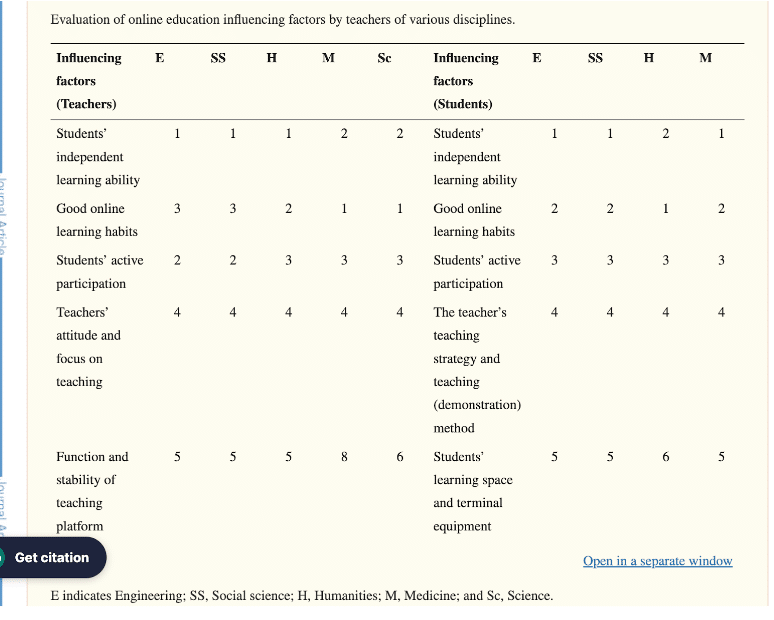
However, since learning has shifted to the online medium, teachers’ performance graphs have lowered significantly. The National Library of Medicine has testified to this by taking samples of teachers from engineering, medical, humanities, and social science backgrounds:-
- Use tools to record and broadcast: 4.6/10
- Strategies to improve students’ attention: 4.8/10
- Interaction through various platforms: 5.5/10
- Maintain the teaching pace: 4.9/5
- Satisfied with the online teaching: 4.8/10
This requires instructors to invest more time in giving compelling online experiences to their students.
11. Students With Special Needs
The National Library of Medicine did a survey where they asked students about their learning preferences after Covid 19. The response was astounding as 63.6% reverted that they prefer offline learning, mainly because of their disability.
- A usually impaired student cannot stare at the laptop screen for over 55 minutes.
- A Dyslexic and migraine sufferer mentioned being dizzy in an online setting.
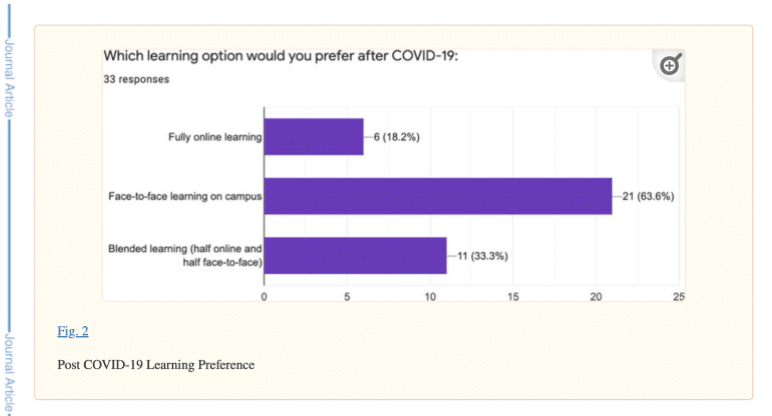
Most students with learning difficulties attested that it’s easier to note details simultaneously when a professor writes on board.
It helps them retain information way better through an online medium.
Related Read:
Wrapping Up: Online Learning Is Still Not Accessible To Everyone
While online learning is more convenient based on a login schedule and not traveling 2 hours daily, there are still some disadvantages that you should be aware of. (Especially while making important educational decisions.)
For your betterment, I have backed most of its data and statistics regarding the online learning drawbacks. So, let’s quickly go through my top 3 reasons why online learning is not ideal:-
- Not Available For Everyone: 25% of students come from low-income families.
- Difficulty Staying Focused: 12.2% cannot focus at all, while 41.1% are a little distracted.
- Limited Access to Resources and Support: Only 29.1% of academic experts were satisfied with their successful support to online students.
Indeed, online learning is not everybody’s cup of tea, which makes students struggle and perform less. However, some individuals could be more suited to online learning.
So, it’s essential to weigh the advantages and disadvantages of online learning before deciding which type of learning is ideal for you!
FAQs
The biggest disadvantage of online classes is that they require a stable internet connection and have random technical issues. Also, being distracted and switching tabs will restrict knowledge retention, and students must study extra hours before exams.
When you are distracted, you fully understand what your teacher is saying. This would result in poor conceptual knowledge and missing out on important exam or assignment details. Either way, the outcome would be bad grades.
Lack of hands-on learning is a problem in online learning. Students from practical fields, such as mechanical engineers, surgeons, beauticians, etc., would have difficulty practicing their craft.
Social isolation is one of the worst effects of distance learning. It also impairs your ability to communicate or behave in social settings. These days, students have developed terrible anxiety, even when it comes to their own friends or family members.
Article By

